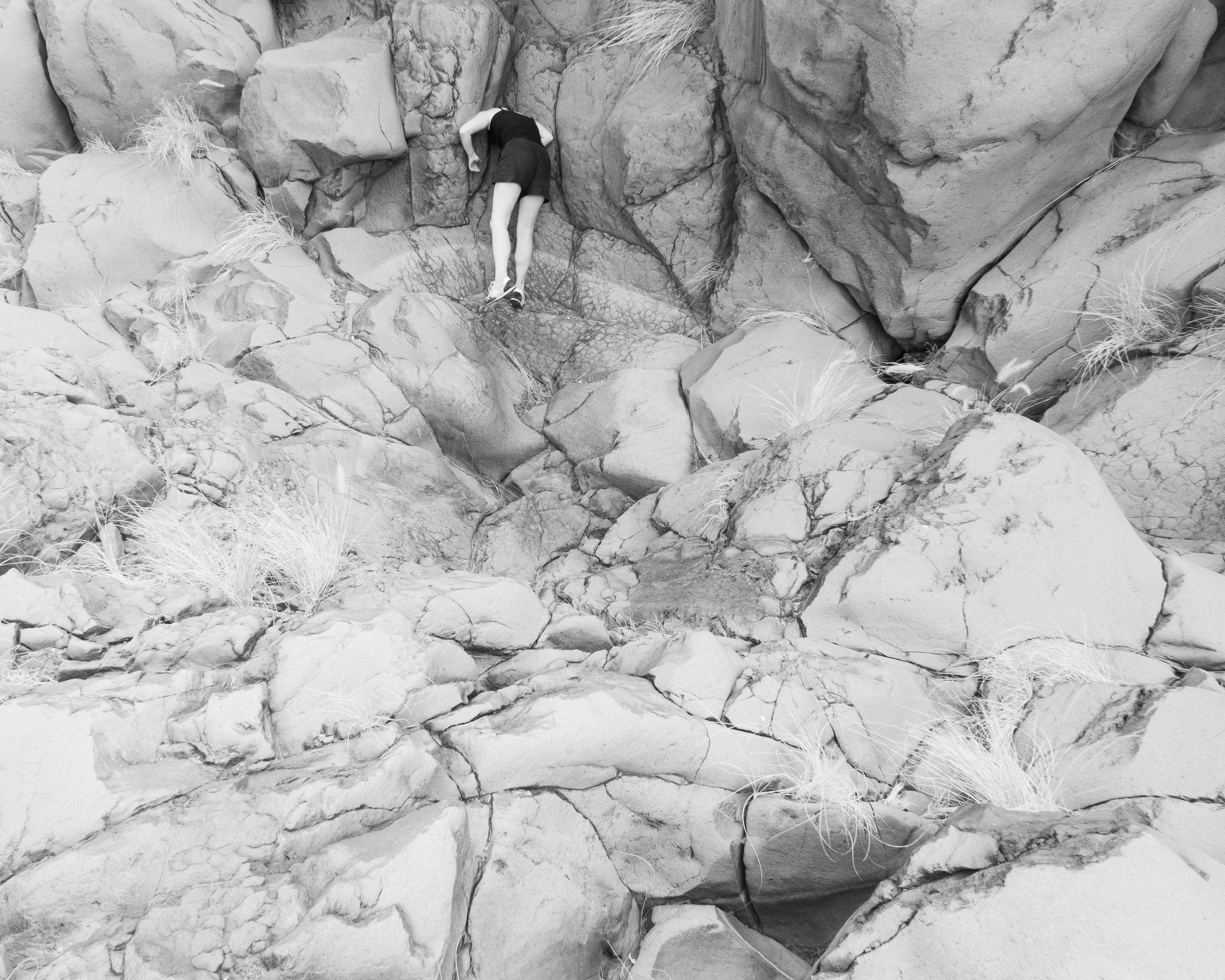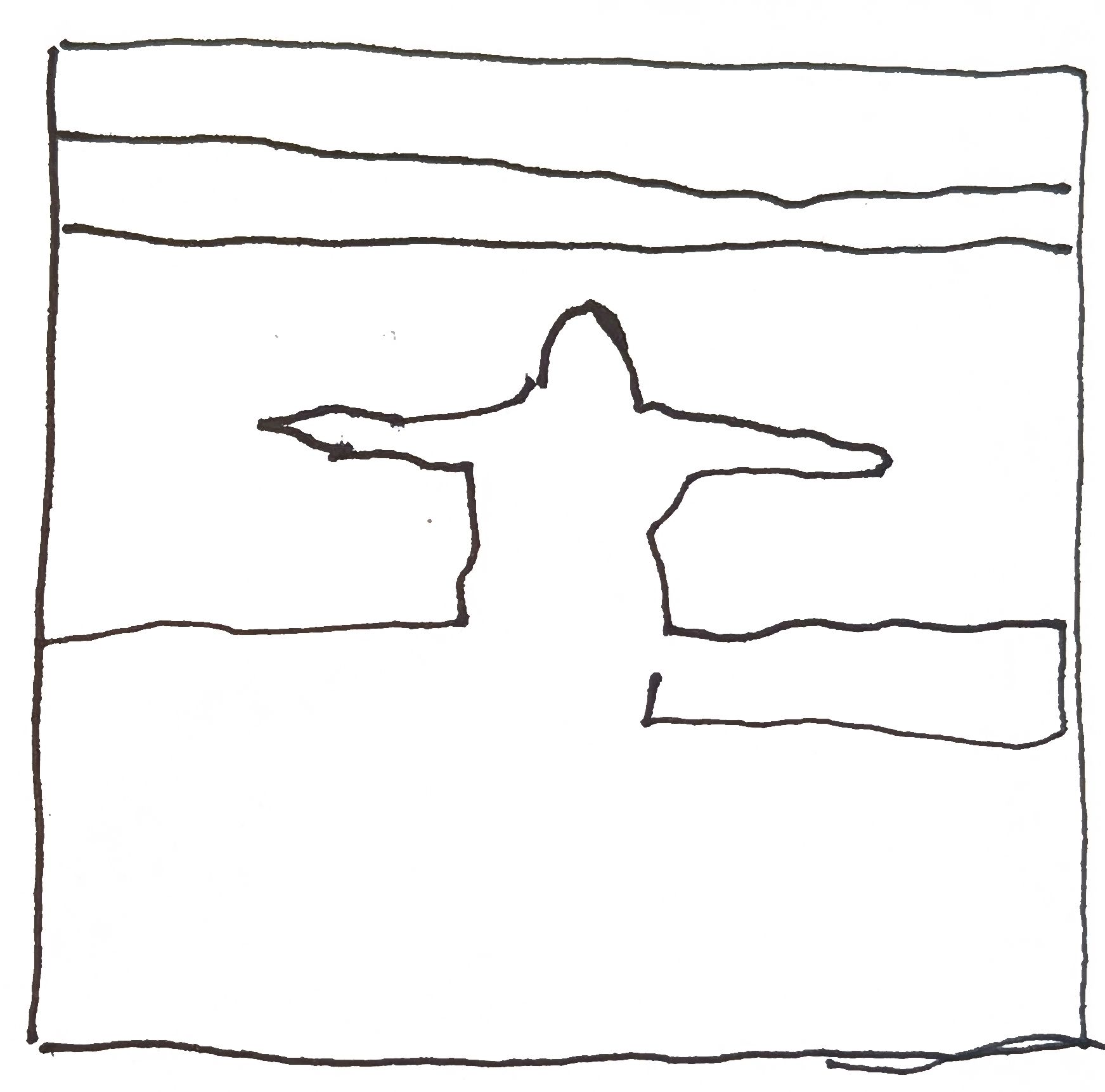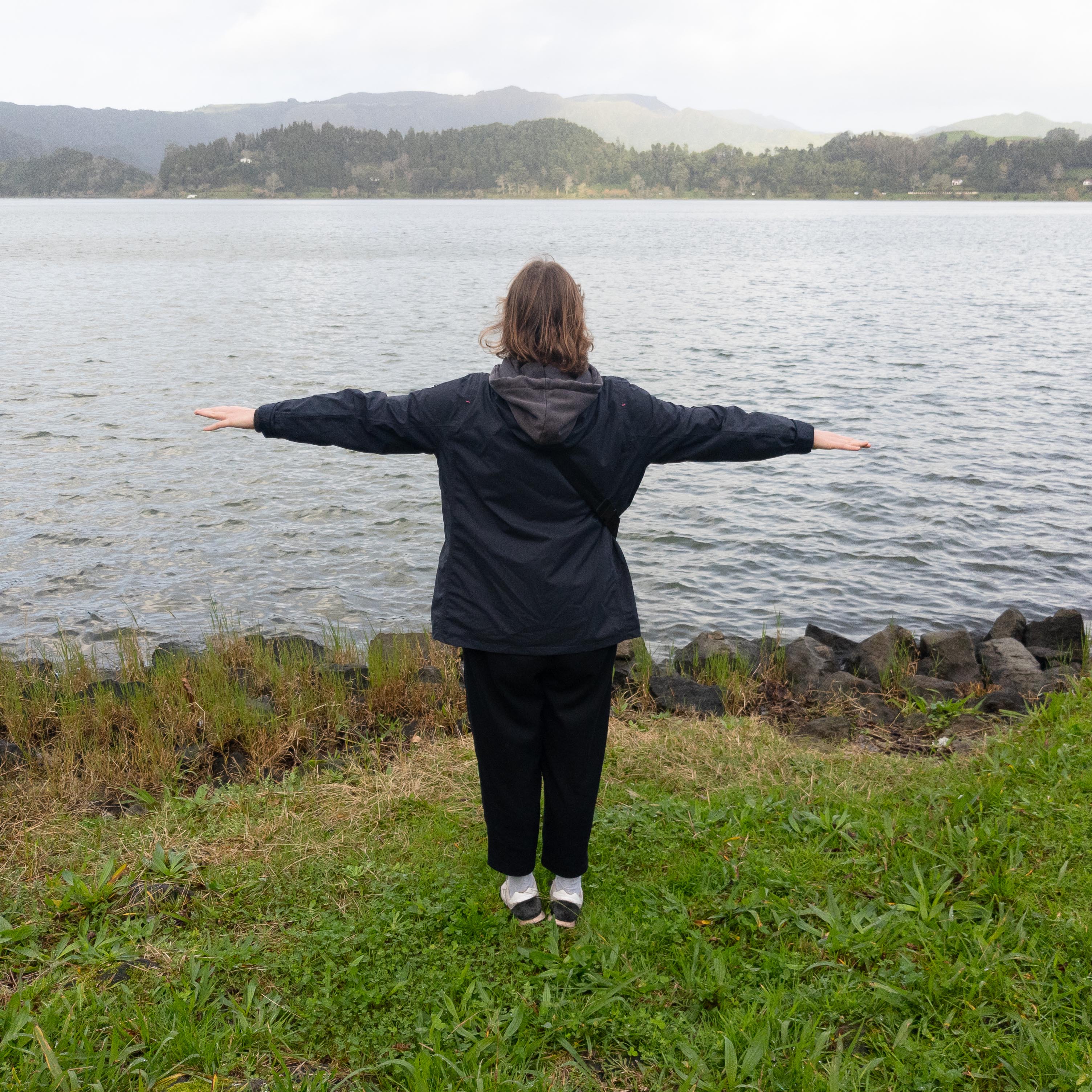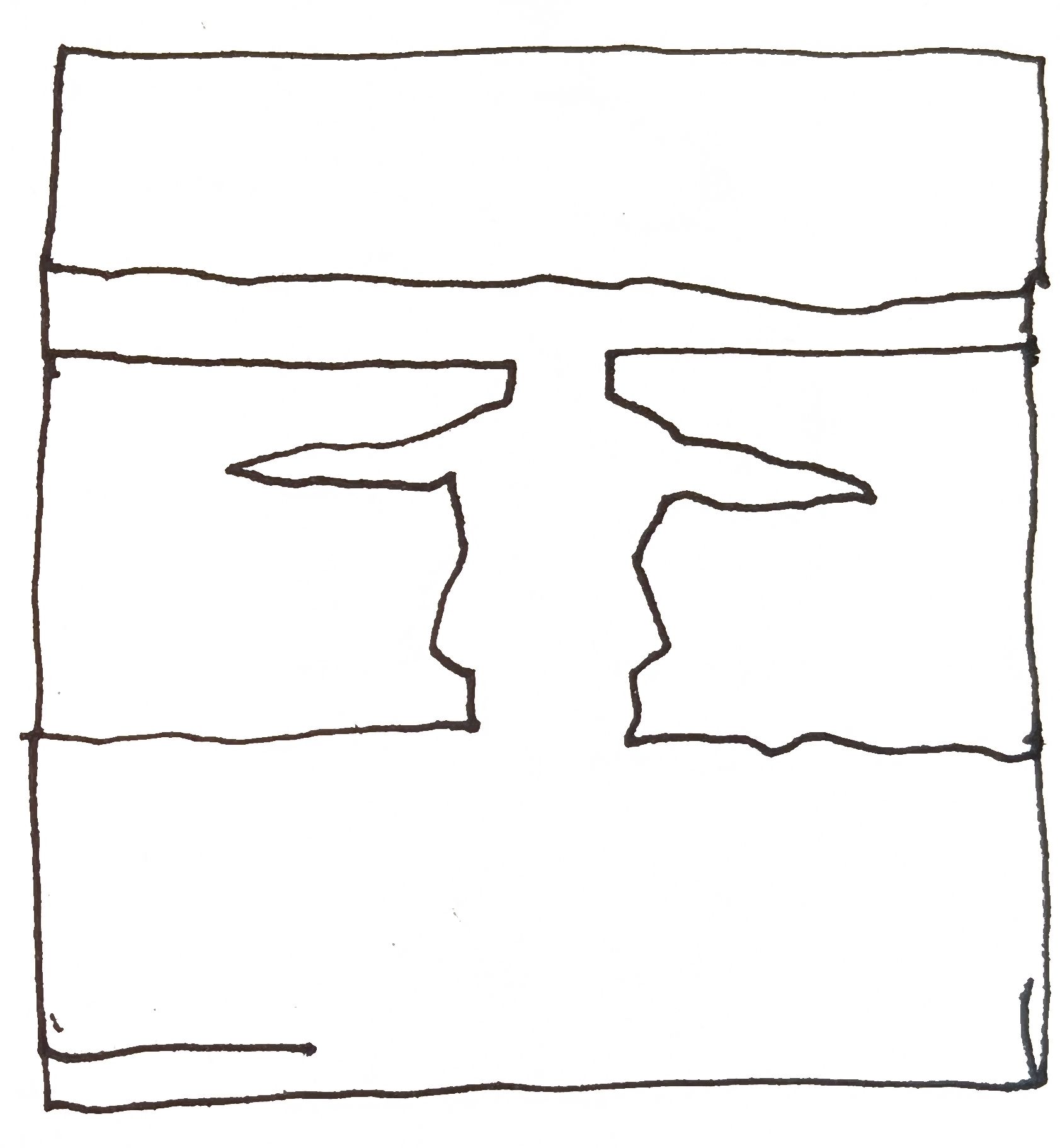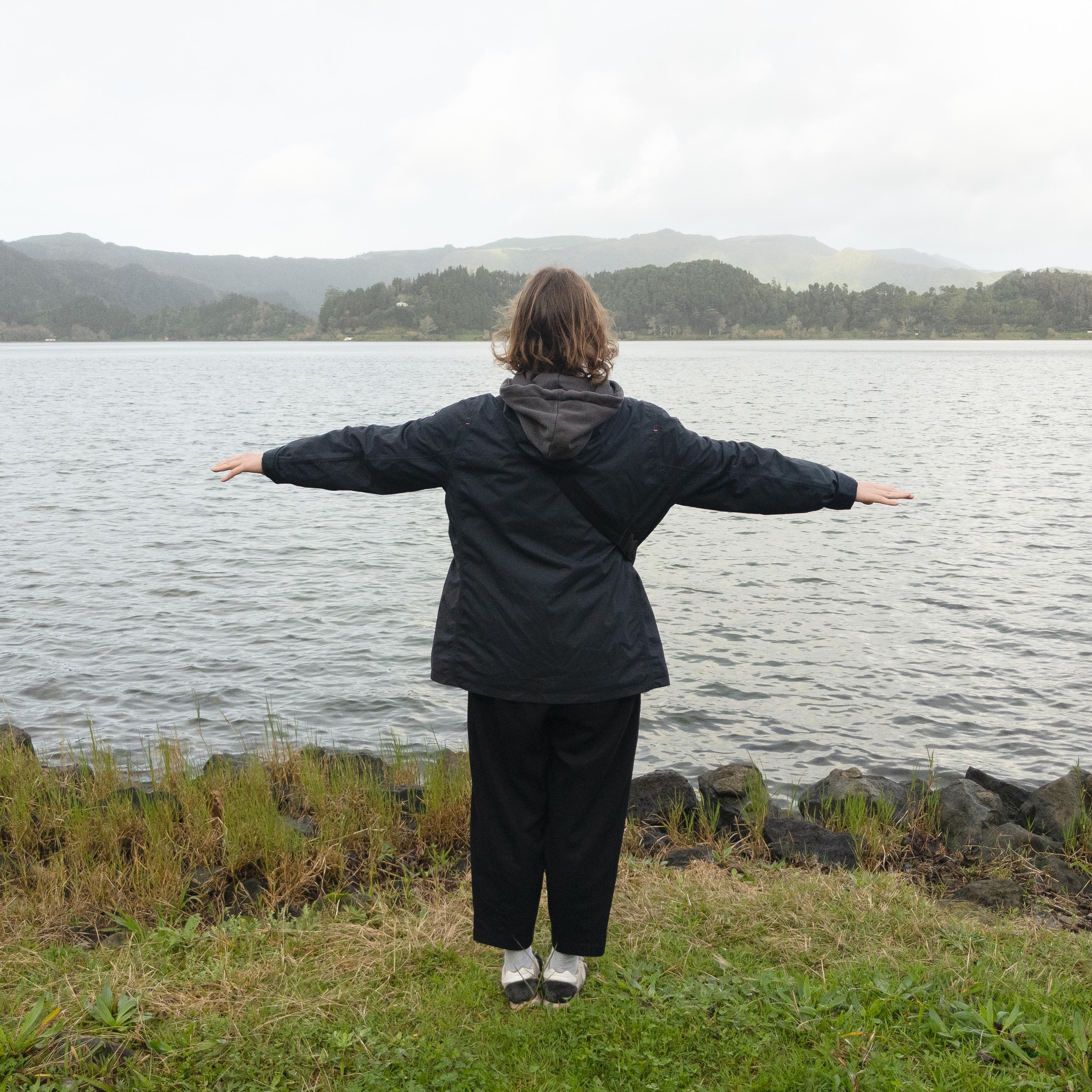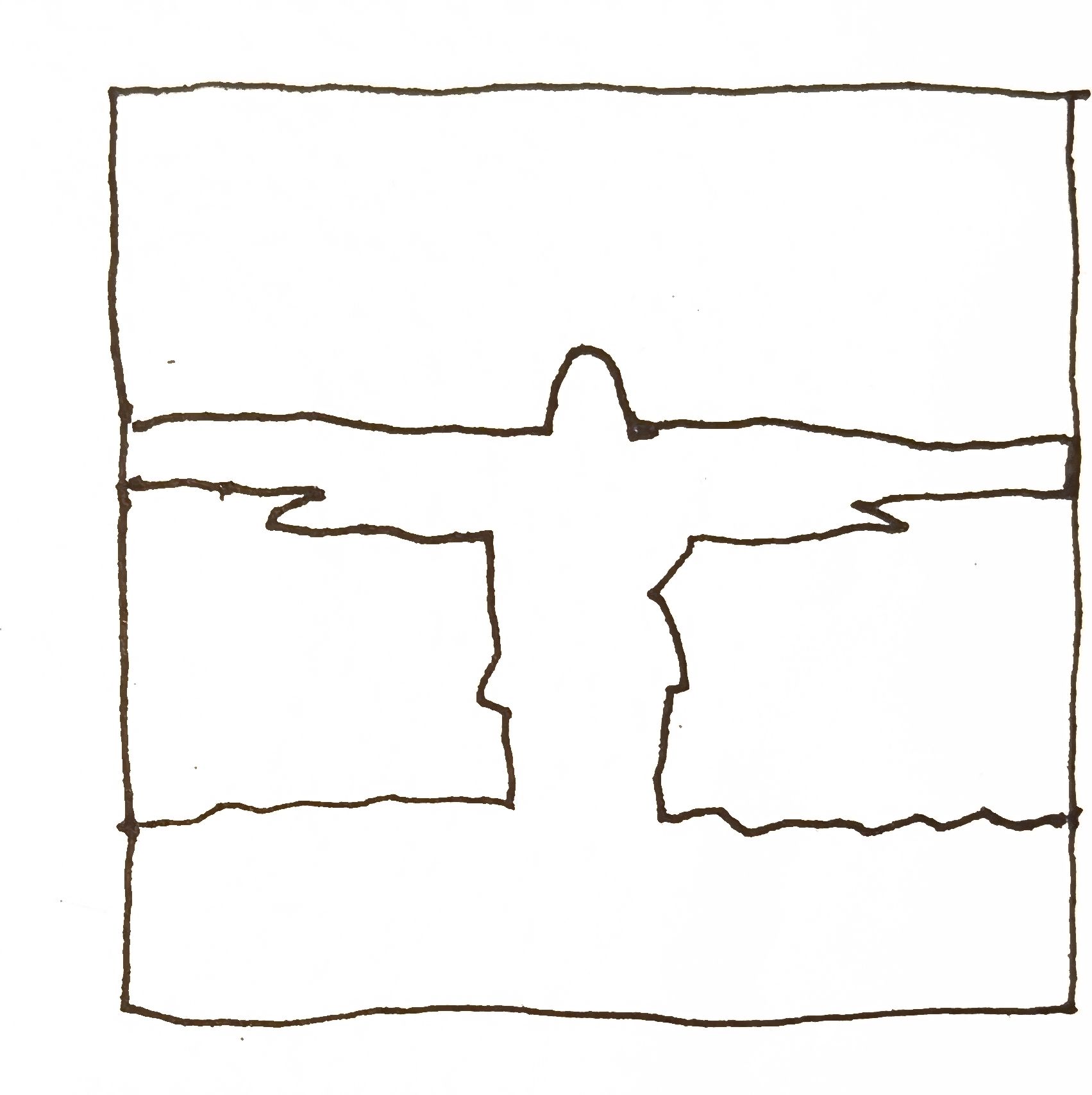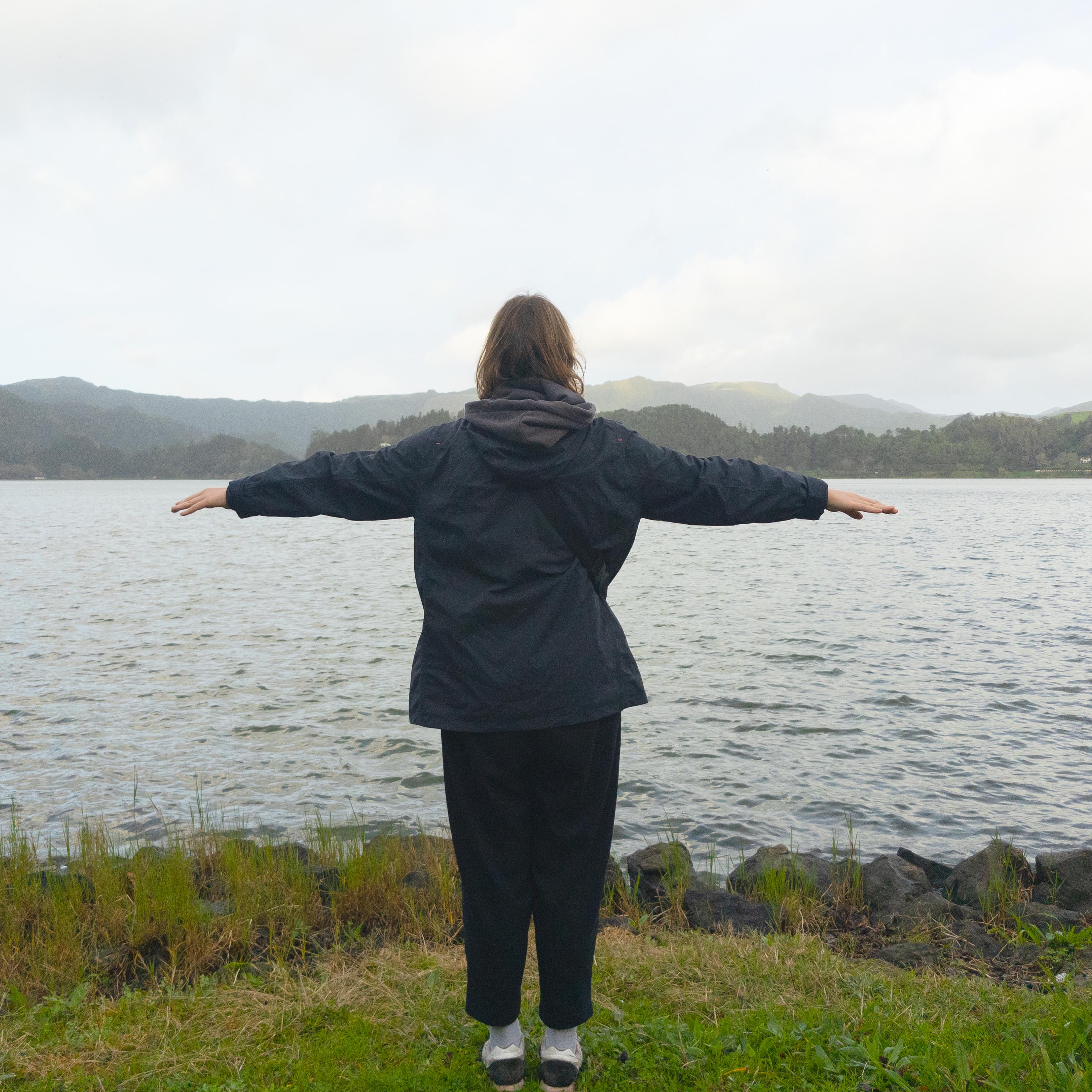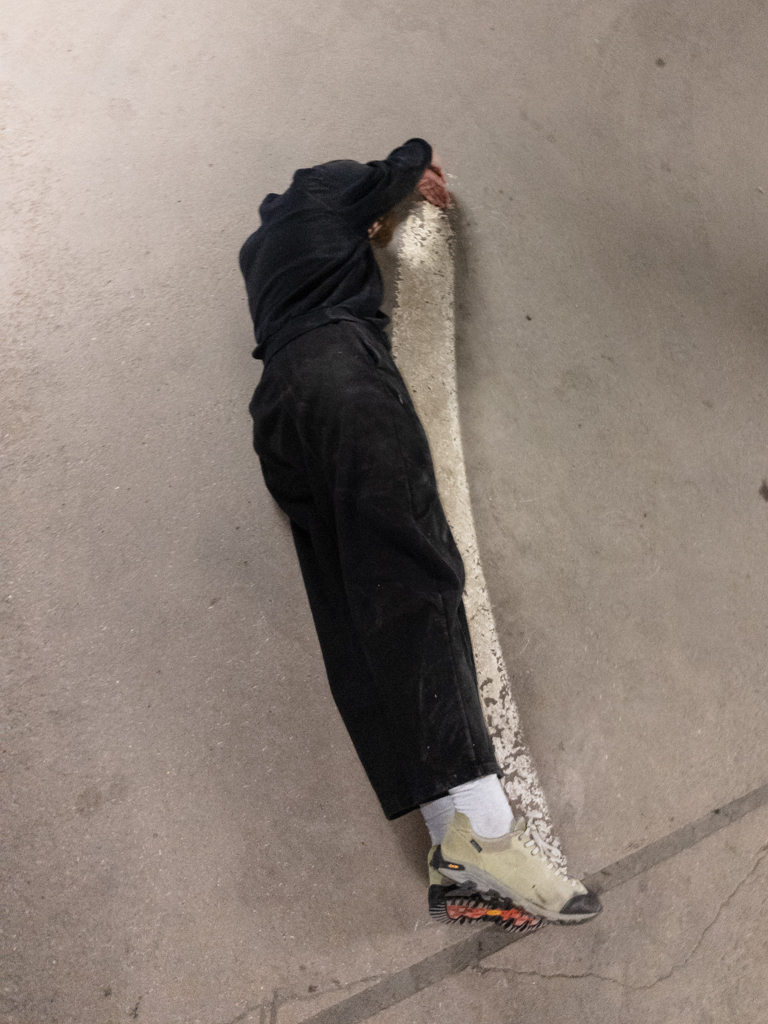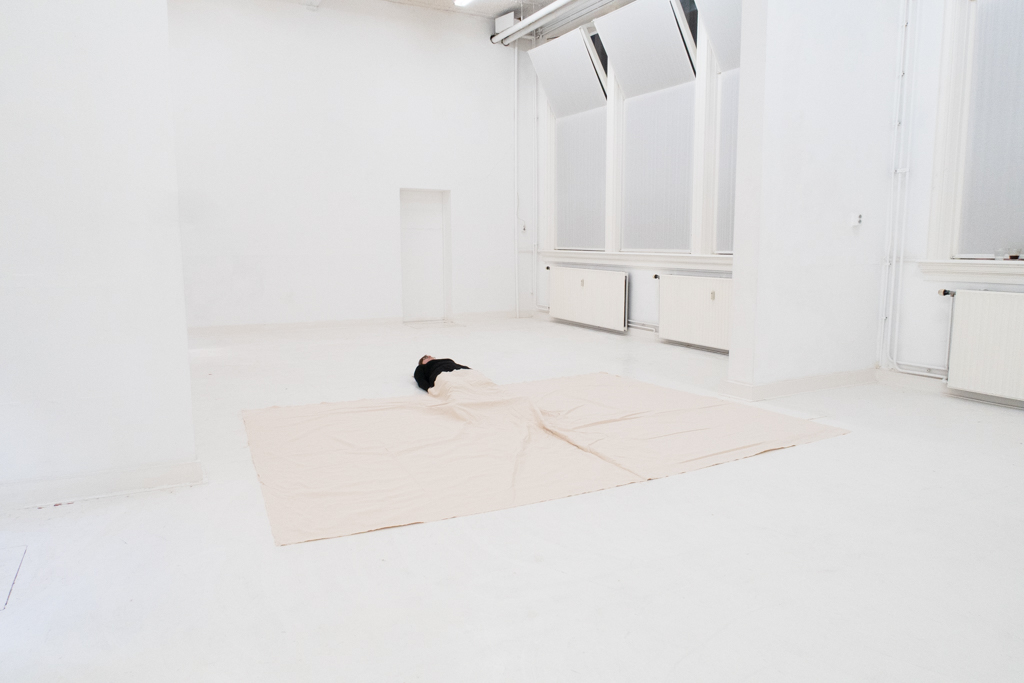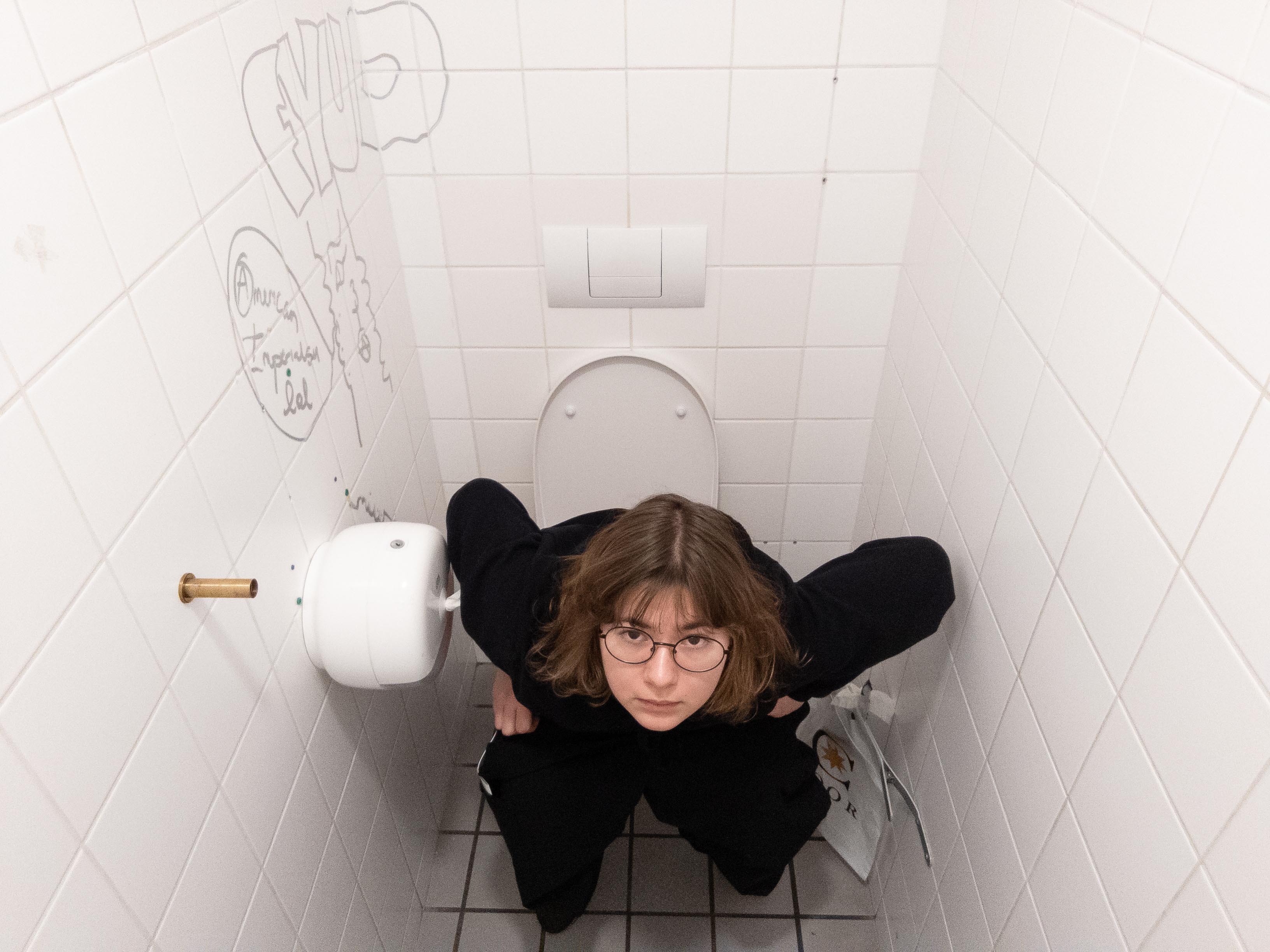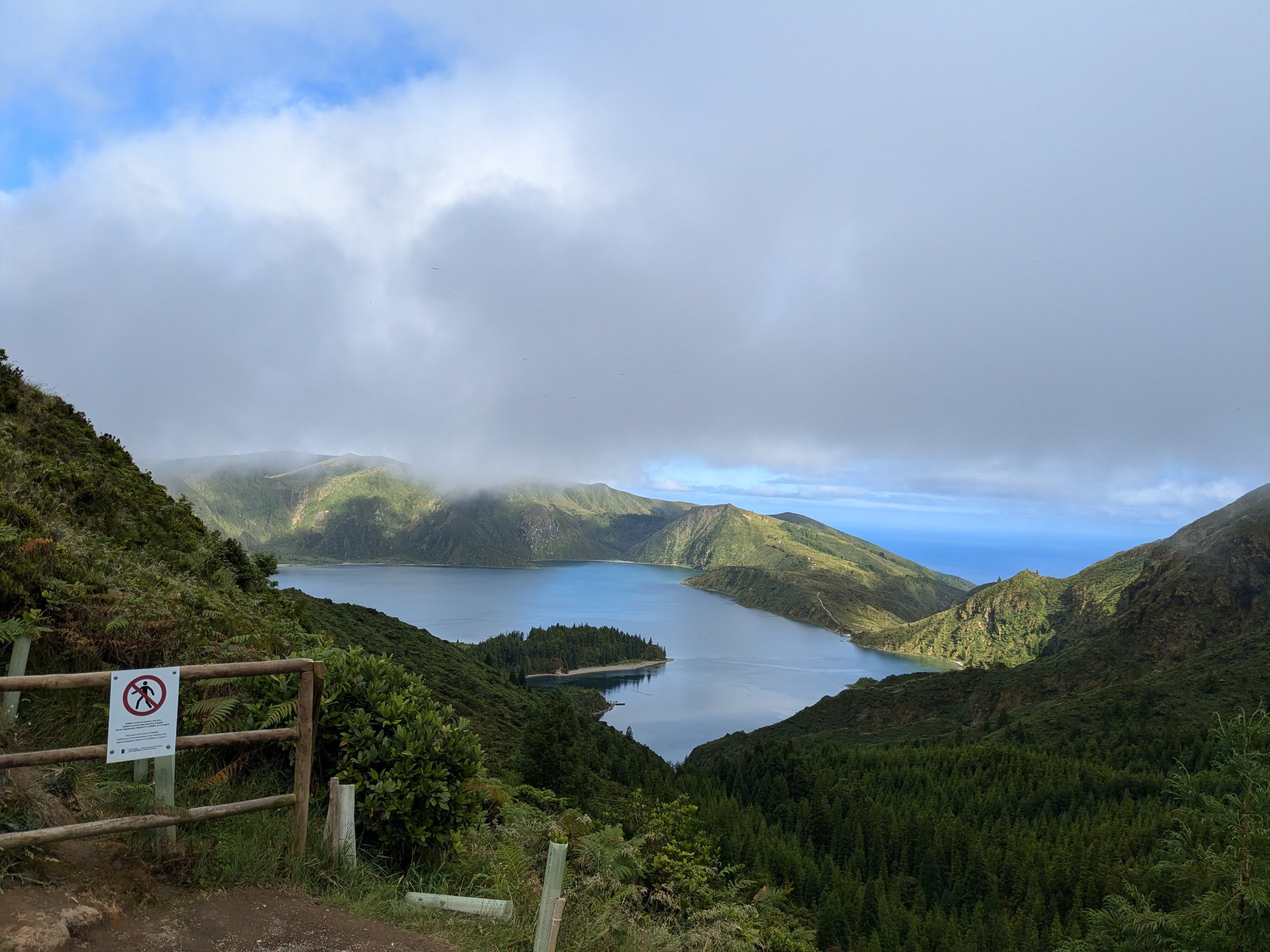
Landscape is a selected area —an object— of land that one looks at, not something, by designation, that one is part of. In the context of a landscape, a postcard, there is distance between person and place; it is a term that differentiates person, looker, from place, look-ee.
Acts of interaction with these settings are meant to facilitate a conscious embodiment of the body itself, in order to take a step inside this landscape. It is by assuming the position of yourself within your borders that they dissipate and you become free to start touching the world. I propose the subject to come nearer to the object surrounding them, on the same plane.
If you put yourself on a different plane, you can’t touch the original one. We do not walk on nature, we walk in nature. Acts done in the purview of this research, be them done in the island or in the studio, call for this merging of parts. A conciliation of the physical with the felt in efforts to shorten the distance with what is perceived (what is there) and what is felt (what is sensed).
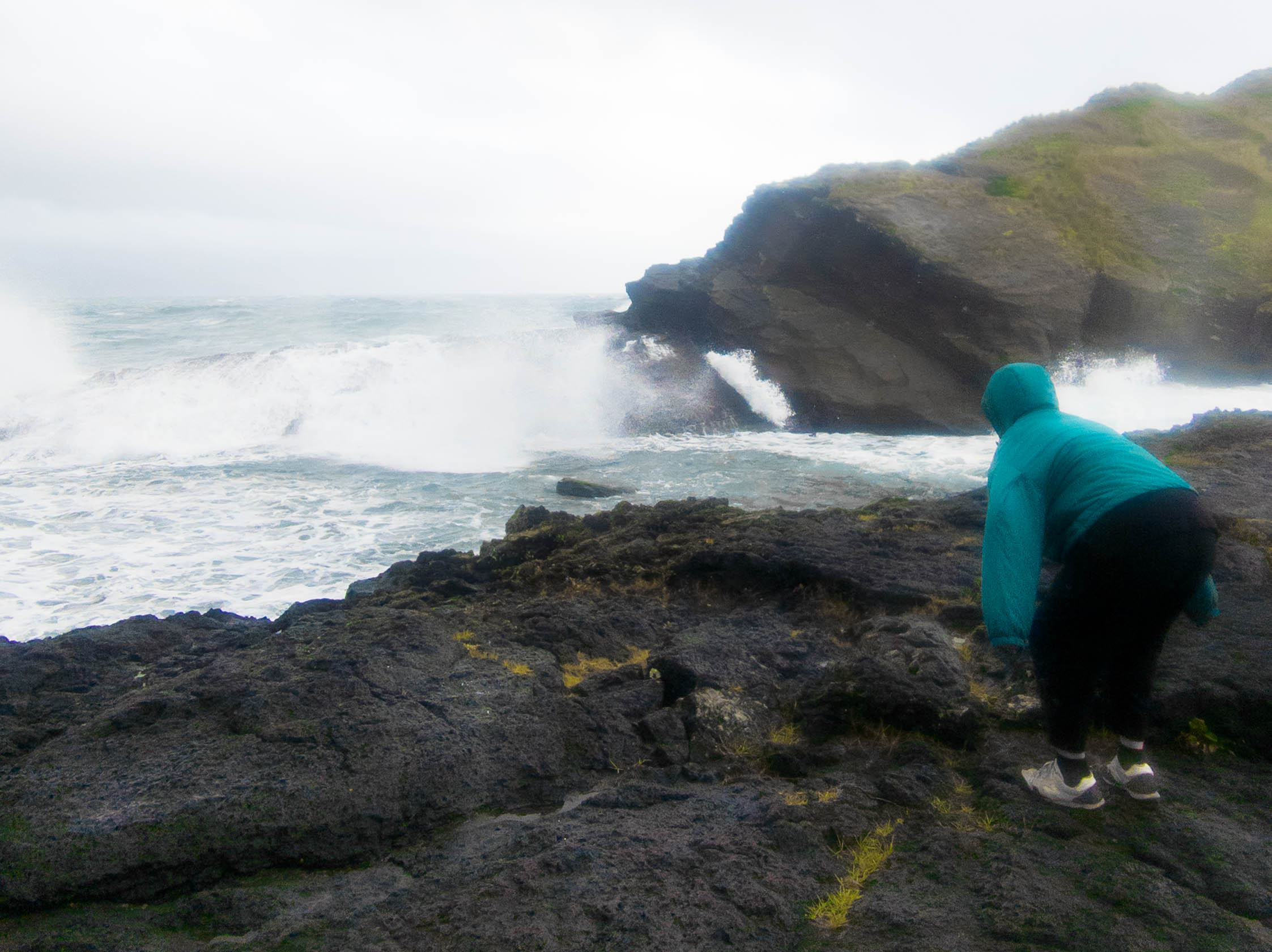
Applying formal visual exercises as interactions with the world is a method of engaging. Interaction is a way of returning to what is there. This makes things in the world be closer to us, as well as allowing for a dialogue with it.
You hear what is said to you, you acknowledge and participate.
These happenings are opportunities for letting go of any hesitation involving contact with an exterior element. Fear of contact reinforces separation between self and world. But to make the external internal and the internal external, is to practice mutual transformation. By embracing interaction as a means of return, we allow ourselves to be shaped just as much as we shape what we encounter. The act of moving within the landscape, embodying it rather than observing, leads to a reconsideration of the boundaries that separate body and place.
If landscape is traditionally conceived as something to be looked at—a scene arranged before the viewer—then acts of insertion and interaction challenge this dynamic. In seeking conciliation between physical presence and affect, the distinction between what is perceived and what is felt begins to blur.
This blurring extends to the notion of borders themselves. The body's perceived boundary shapes its relationship to the world.
